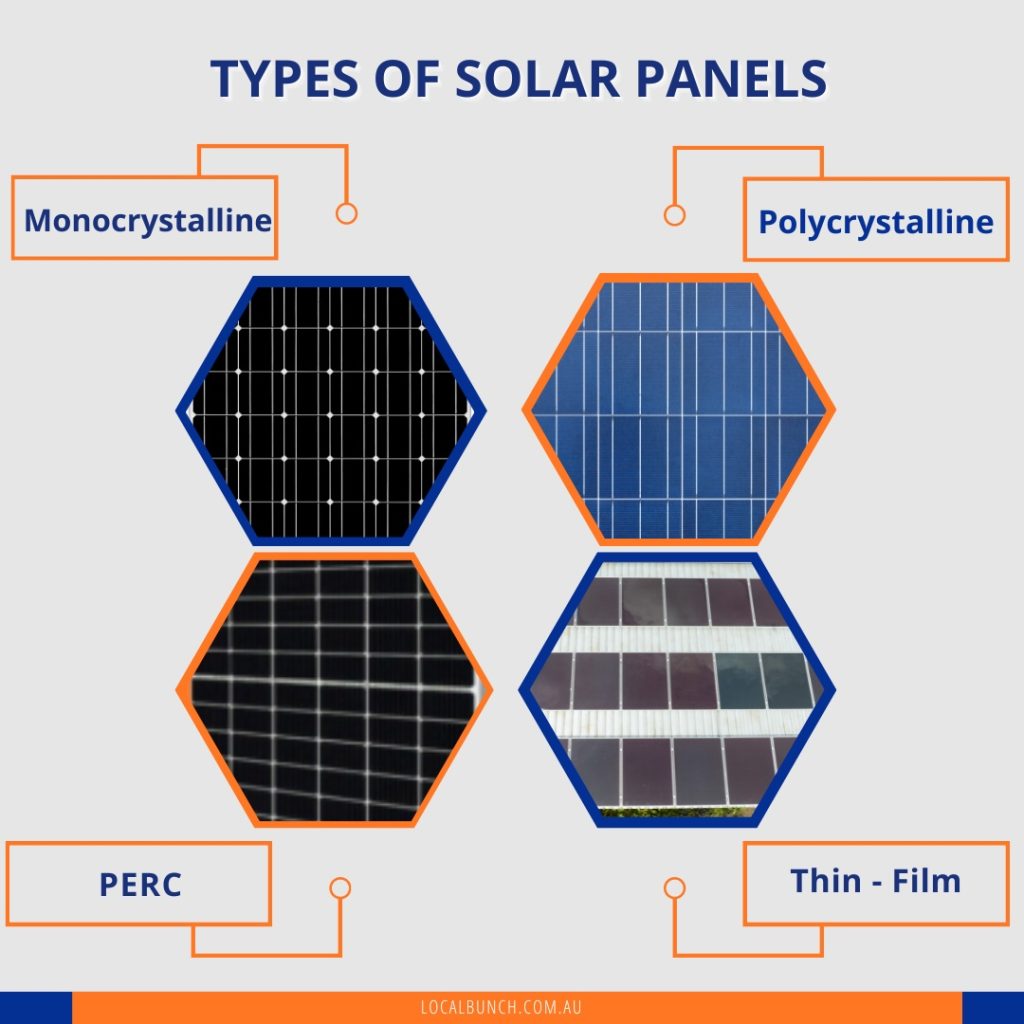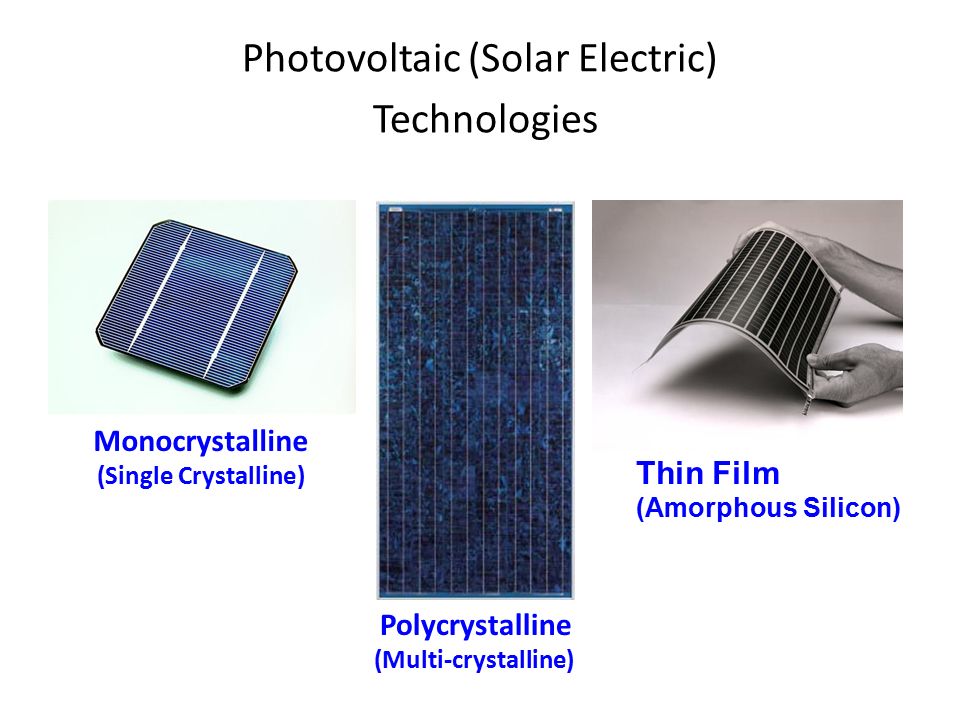Solar energy has revolutionized the way we think about powering our homes, businesses, and even gadgets. At the heart of this solar revolution lies photovoltaic (PV) technology, an ingenious process that converts sunlight into electricity. But did you know there’s more than one type of photovoltaic technology?
Understanding the three types of photovoltaics—crystalline silicon, thin-film, and emerging technologies—is key to making informed decisions about solar energy. Whether you’re a homeowner considering rooftop panels, a business looking to cut energy costs, or just someone curious about sustainable tech, this guide is for you.
Let’s dive into the exciting world of photovoltaics and explore the types, benefits, and potential they hold for a greener future.

Photovoltaics, often abbreviated as PV, are the backbone of solar energy systems. They rely on the photovoltaic effect, a process where sunlight hitting a material (like silicon) knocks loose electrons, creating an electric current. It’s like magic—but with physics!
PV cells are grouped together in panels, and these panels power everything from your phone charger to entire solar farms. The brilliance of photovoltaics lies in their ability to generate clean, renewable energy from a resource that shines down on us daily: the sun.
A Brief History of Photovoltaics
Did you know the photovoltaic effect was discovered in 1839 by a French physicist named Edmond Becquerel? Fast forward to 1954, and the first silicon solar cell was born at Bell Labs, boasting just 6% efficiency. Since then, the solar industry has grown by leaps and bounds, with modern panels reaching over 20% efficiency.
While photovoltaics started as a niche technology used in space exploration (remember those solar-powered satellites?), today they’re everywhere, from residential rooftops to massive solar farms spanning acres.
The Three Types of Photovoltaics
What Are the Three Types of Photovoltaics?
Photovoltaics come in three main varieties, each with unique characteristics suited to different needs. The three types are:
- Crystalline Silicon Photovoltaics – The most common and reliable choice.
- Thin-Film Photovoltaics – Lightweight, flexible, and versatile.
- Emerging Photovoltaics – The new kids on the block, promising groundbreaking advancements.
Each type has its own strengths and trade-offs, so understanding them in detail can help you decide which one is right for your solar energy goals.
1. Crystalline Silicon Photovoltaics
What Are Crystalline Silicon PV Cells?
Crystalline silicon (c-Si) photovoltaics are the gold standard in solar technology. They’re made using silicon, one of the most abundant elements on Earth, and come in two main flavors:
- Monocrystalline silicon: Recognized by its uniform black color and high efficiency (typically 20% or more). These are cut from a single, pure crystal of silicon, making them highly efficient but also a bit pricier.
- Polycrystalline silicon: Known for its speckled blue appearance, this type is made from multiple silicon fragments melted together. It’s slightly less efficient (15–18%) but more affordable.
Think of monocrystalline as the luxury sports car of photovoltaics—sleek and powerful—while polycrystalline is your reliable family sedan.
Pros and Cons of Crystalline Silicon
| Advantages | Disadvantages |
|---|---|
| High efficiency (20–25%) | Higher upfront cost (especially monocrystalline) |
| Long lifespan (25–30 years or more) | Rigid and heavy—less suited for flexible applications |
| Proven, reliable technology | Manufacturing requires significant energy (though improving!) |
Fun fact: Crystalline silicon panels dominate the market, making up about 90% of global solar installations. This is largely due to their unmatched durability and performance.
2. Thin-Film Photovoltaics
What Are Thin-Film PV Cells?
Thin-film photovoltaics are the lightweight, flexible cousin of crystalline silicon. Instead of thick silicon wafers, thin-film panels are made by depositing photovoltaic materials (like amorphous silicon, cadmium telluride, or CIGS—copper indium gallium selenide) onto a surface, often glass, plastic, or metal.
Their ultra-thin construction (hence the name) makes them ideal for applications where flexibility or weight matters, like solar backpacks, curved building surfaces, or portable devices.
Advantages and Limitations of Thin-Film PV
| Advantages | Limitations |
|---|---|
| Lightweight and flexible | Lower efficiency (10–12% on average) |
| Performs well in low-light or high-temperature conditions | Shorter lifespan than crystalline silicon |
| Lower production costs due to simpler manufacturing | Some types (like cadmium telluride) use toxic materials |
Thin-film PVs might not win in efficiency, but their versatility is unbeatable. Imagine outfitting an RV roof with solar panels that bend to its curves or powering a remote sensor where every ounce counts.
3. Emerging Photovoltaics (Third-Generation Technologies)
What Are Emerging Photovoltaics?
Emerging photovoltaics are the cutting-edge technologies that push the boundaries of solar energy. These include:
- Perovskite solar cells: Made with a unique crystal structure, these promise efficiencies as high as 30% with lower manufacturing costs.
- Organic photovoltaics (OPV): Lightweight and semi-transparent, OPVs could revolutionize urban settings by integrating into windows or facades.
- Quantum dot solar cells: Tiny nanoparticles that can be tuned to absorb different wavelengths of light, improving efficiency.
Although these technologies are still in development, their potential is staggering. For example, perovskite cells have already shown rapid efficiency improvements, jumping from 3% to over 25% in just a decade.
Challenges and Opportunities of Emerging PV
| Opportunities | Challenges |
|---|---|
| Potential for higher efficiency than traditional PV | Durability and stability issues |
| Cheaper, scalable manufacturing techniques | Limited commercialization (still in labs) |
| Expands solar possibilities (transparent PV, flexible designs) | Environmental concerns for materials used |
Case in point: In 2022, researchers created semi-transparent perovskite cells that could replace windows, turning skyscrapers into giant solar panels. How cool is that?

Comparing the Three Types of Photovoltaics
Which Type of Photovoltaic is Right for You?
With three distinct types of photovoltaics available, choosing the right one can feel overwhelming. The best choice depends on your specific needs—whether it’s maximizing energy efficiency, working within a budget, or meeting unique installation requirements.
To help you decide, let’s break it down into a side-by-side comparison:
| Feature | Crystalline Silicon | Thin-Film | Emerging PV (e.g., Perovskite) |
|---|---|---|---|
| Efficiency | 15–25% (high) | 10–12% (moderate) | 25–30% (potentially very high) |
| Cost | Moderate to high | Lower production costs | Expected to be low (but not yet commercial) |
| Lifespan | 25–30 years | 10–20 years | Still unknown (durability under testing) |
| Weight & Flexibility | Heavy and rigid | Lightweight, flexible | Flexible and lightweight in some designs |
| Best Use Cases | Rooftop solar, large-scale solar farms | Portable devices, curved surfaces | Future urban integration (windows, facades) |
| Market Availability | Widely available | Available but less common | Mostly in research phase |
Key Questions to Ask Before Choosing a Photovoltaic Technology:
- What is your primary goal? If efficiency and reliability are top priorities, go for crystalline silicon. If flexibility or weight is critical, thin-film is a better choice.
- What’s your budget? Thin-film panels are more budget-friendly, but crystalline silicon delivers better long-term performance.
- Where will it be installed? Rooftops and solar farms work best with crystalline silicon, while thin-film shines in unique or portable setups. Emerging PVs may be ideal for futuristic urban applications like solar windows.
A Real-World Example:
Let’s say you’re installing a solar energy system for your home. Crystalline silicon panels are a no-brainer—they’re efficient, durable, and work perfectly in standard rooftop setups. However, if you’re designing a solar-powered backpack for hiking, thin-film panels win due to their lightness and portability.
Ultimately, the “right” photovoltaic depends on your specific needs and vision. Understanding the strengths and limitations of each type makes the decision process much easier—and ensures you’re getting the most bang for your solar buck!

Photovoltaics in Everyday Life
Real-World Applications of Photovoltaics
Photovoltaics have become an integral part of our lives, popping up in ways you might not even notice. From powering your neighbor’s home to keeping satellites running in space, photovoltaics are quietly reshaping how we generate and consume energy.
Here are some of the most common (and surprising) applications of photovoltaics:
1. Residential Rooftop Systems
Rooftop solar panels are perhaps the most recognizable use of photovoltaics. Homeowners install these systems to lower their electricity bills, reduce their carbon footprint, and even earn money by selling excess energy back to the grid.
- Fact: A typical 6 kW solar panel system can save a U.S. household up to $1,500 annually in electricity costs.
- Bonus: Adding solar panels can increase home resale value. A study by Zillow found homes with solar panels sell for 4.1% more on average.
2. Large-Scale Solar Farms
Utility-scale solar farms use vast arrays of PV panels to produce energy for entire communities. These farms often span hundreds of acres and feed electricity directly into the power grid.
- Case Study: The Bhadla Solar Park in India, one of the largest solar farms in the world, spans 14,000 acres and has a capacity of over 2,200 MW, powering millions of homes.
3. Portable and Off-Grid Systems
Thin-film photovoltaics are a game-changer for portability. They’re used in:
- Solar chargers for phones and laptops.
- Off-grid cabins or RVs for remote living.
- Solar-powered lanterns and water pumps in rural areas, bringing power to communities without reliable access to electricity.
4. Integration into Buildings (BIPV)
Building-integrated photovoltaics (BIPV) merge solar panels into construction materials like windows, roofs, and facades. This approach saves space and enhances aesthetics.
- Emerging Tech: Transparent photovoltaic windows, made with perovskite cells, can transform skyscrapers into energy-generating structures without sacrificing natural light.
5. Solar-Powered Vehicles and Gadgets
From solar-powered cars and boats to streetlights and calculators, photovoltaics are driving innovation in unexpected places.
- Example: The Lightyear 0, a solar-powered car, claims to drive up to 43 miles daily using energy from its solar panels, perfect for short commutes.
The Role of Photovoltaics in Sustainable Development
Photovoltaics are more than just a clean energy source—they’re a critical tool in achieving global sustainability goals. Here’s how:
- Reducing Carbon Emissions: PV systems produce zero emissions during operation, helping countries meet their climate targets.
- Energy Independence: Solar energy reduces reliance on fossil fuels and enhances energy security, especially for remote or off-grid regions.
- Job Creation: The solar industry is booming, with millions of jobs created worldwide in manufacturing, installation, and maintenance.
Photovoltaics are everywhere, powering our homes, industries, and even the devices we carry. They’re not just reshaping energy; they’re shaping the future.
